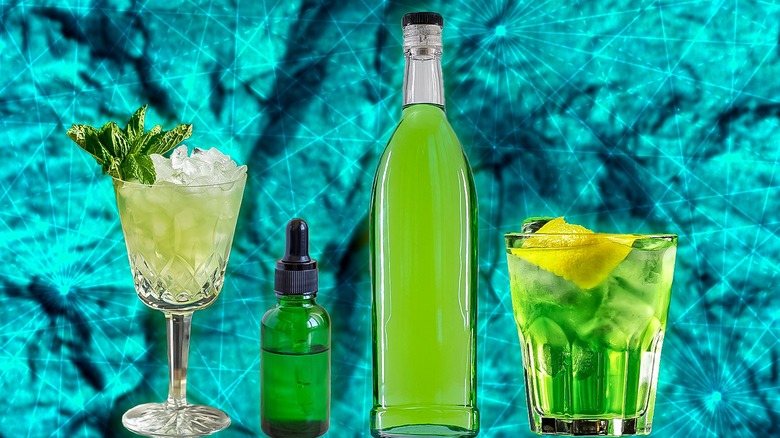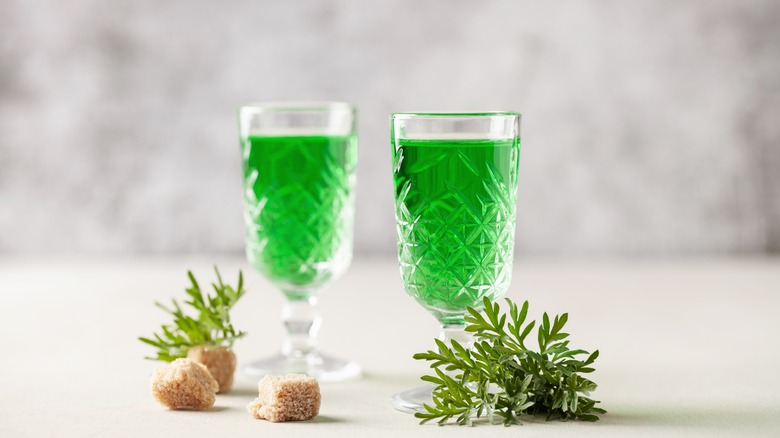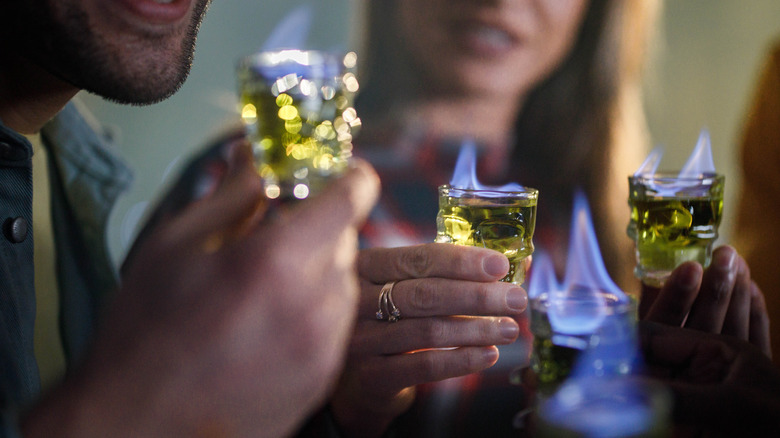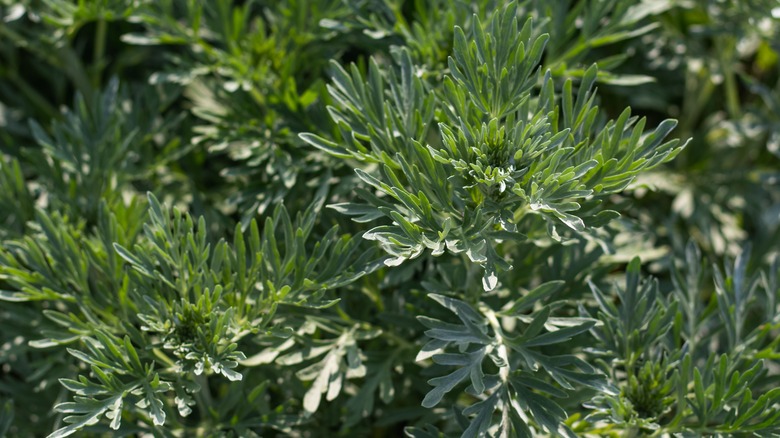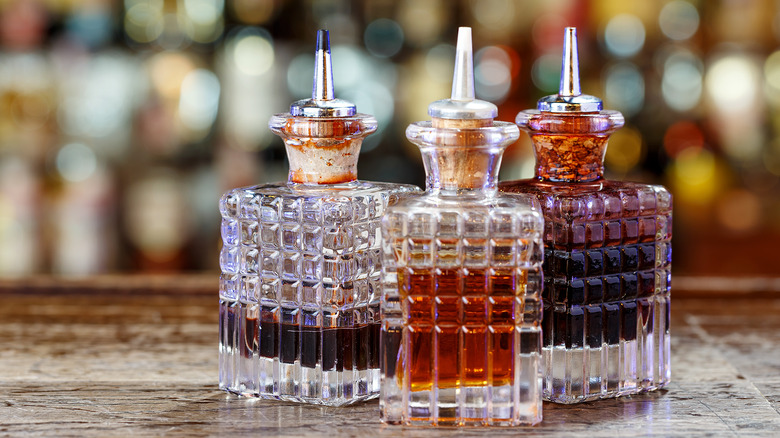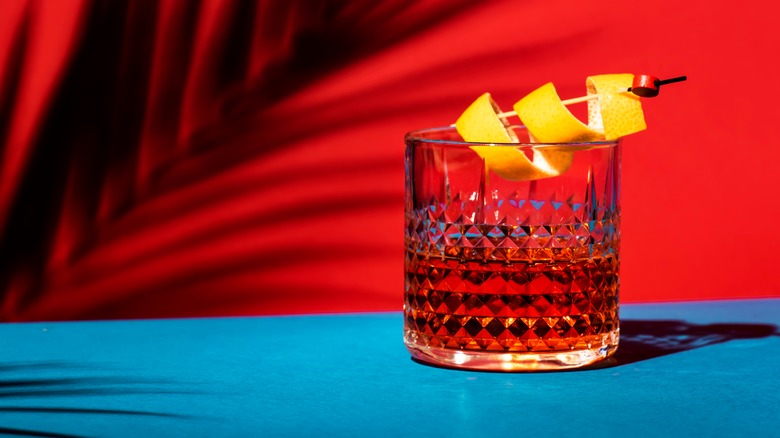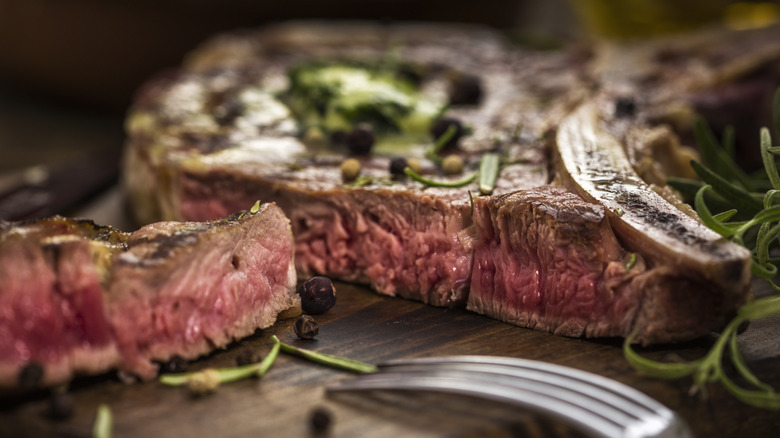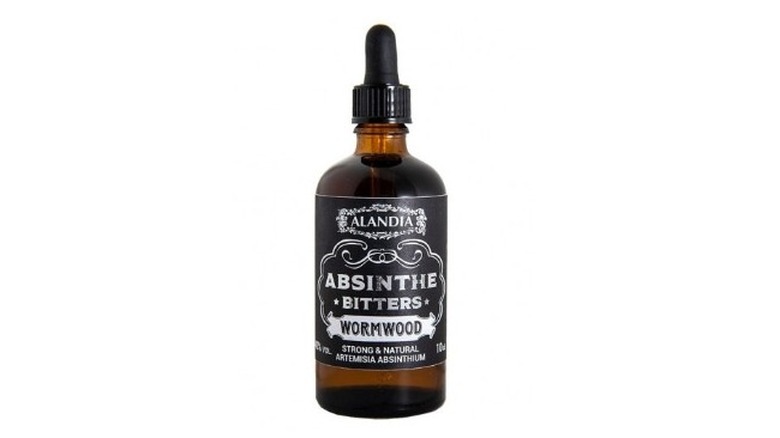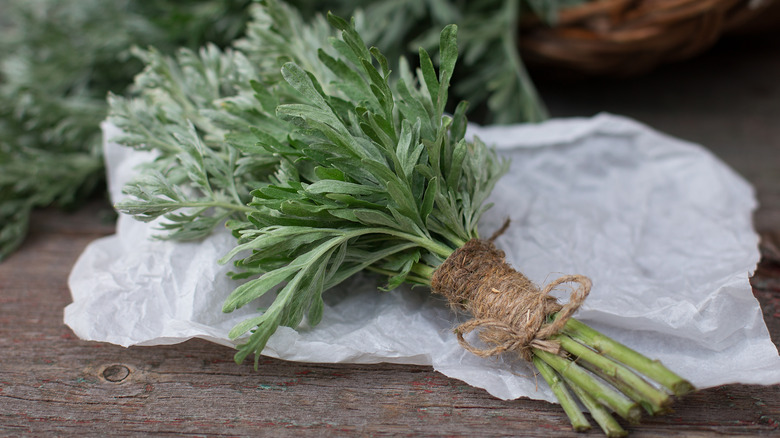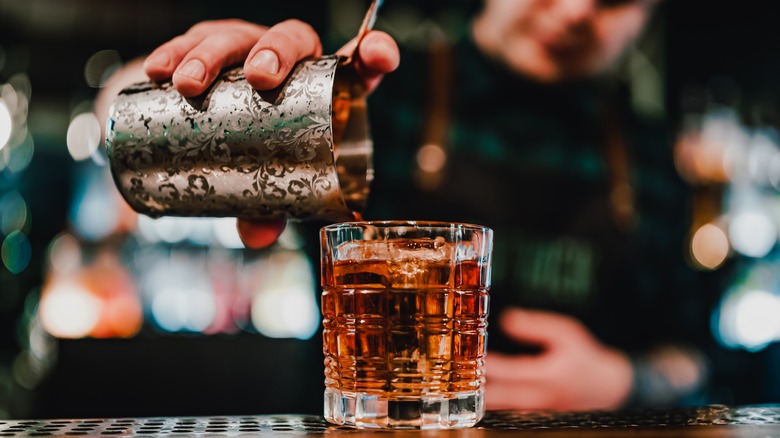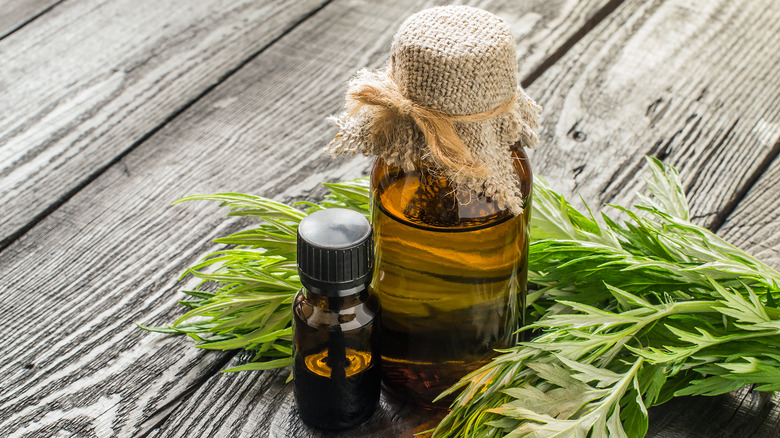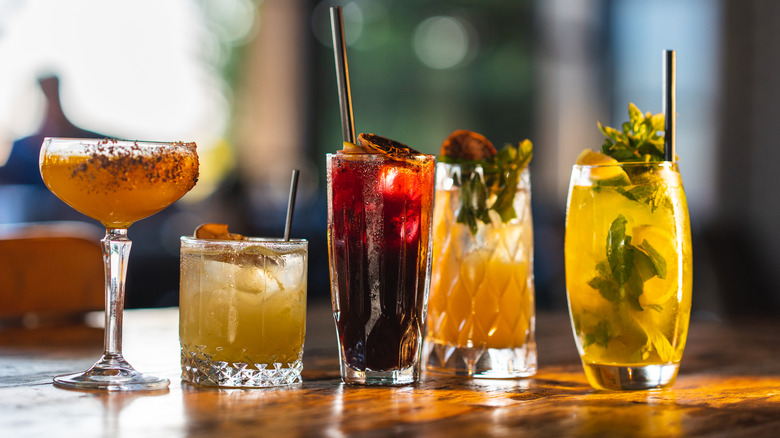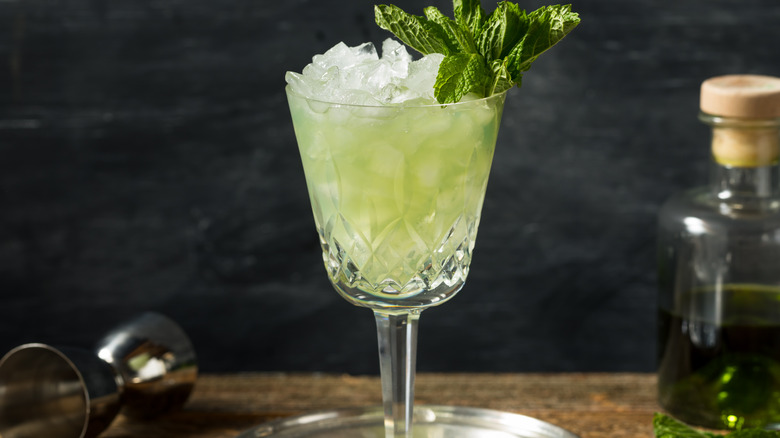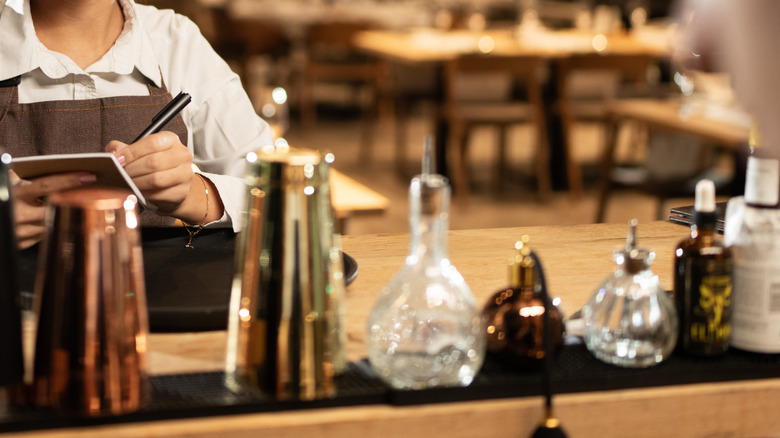What Are Absinthe Bitters And How Do You Use Them In Cocktails?
Absinthe bitters are a distinctive, intriguing, and often misunderstood ingredient in the world of mixology. Essentially, they are a concentrated form of traditional absinthe, a famed spirit known for its complex flavor and storied history. Absinthe itself, made from anise, wormwood, fennel, and other botanicals, rose to prominence in the 19th and early 20th centuries, particularly in France, where it was beloved by artists and writers. However, due to misconceptions about its psychoactive properties, absinthe faced widespread bans. Today, absinthe has made a resurgence, and in its wake, absinthe bitters have emerged as a popular ingredient among bartenders and cocktail enthusiasts.
Absinthe bitters encapsulate the spirit's herbal, slightly bitter, and licorice-like flavor in a more concentrated and less alcoholic form. This makes them a versatile tool in a mixologist's arsenal. Unlike the traditional absinthe ritual involving sugar and water, absinthe bitters are used in minute quantities to impart a nuanced, complex flavor to cocktails. They add depth and an herbal undertone that can elevate classic drinks or inspire new creations.
We have delved into the intriguing world of absinthe bitters, exploring their history, how they differ from traditional absinthe, and how they can be skillfully incorporated into cocktails. Whether you're looking to add a touch of bohemian flair to your drinks or simply expand your mixology repertoire, absinthe bitters offer a gateway to a world of rich flavors and creative possibilities.
What are absinthe bitters?
You can trace the origins of absinthe bitters back to Switzerland in the late 18th century when, according to Difford's Guide, absinthe emerged in the modern world as a medicinal elixir. The creation of absinthe, the primary component of these bitters, is attributed to Pierre Ordinaire, a French doctor who distilled an herbal recipe in the Swiss town of Couvet. This concoction was intended as a cure-all remedy, but it quickly gained popularity for its distinctive taste and intoxicating effects. The key botanical components of absinthe ─ wormwood (Artemisia absinthium), anise, and fennel ─ are what give the bitters their signature flavor profile. Wormwood, particularly, is the heart of absinthe, known for its bitter taste and supposed therapeutic properties.
Absinthe bitters are a concentrated form of absinthe. They are not meant to be consumed in large quantities like traditional spirits, but are instead used in dashes to flavor cocktails. Visually, absinthe bitters usually have a greenish hue, a nod to the wormwood, though some varieties may be clear or take on a different coloration depending on the additional botanicals used. They are typically bottled in small quantities, reflecting their usage as a potent flavor enhancer rather than a primary drink ingredient. The physical attributes of these bitters include a high concentration of alcohol and an intense aroma, showcasing a complex blend of herbal and anise notes.
Myths and misconceptions
There are numerous myths and misconceptions surrounding absinthe bitters, primarily stemming from their association with the spirit. One of the most enduring myths is that absinthe has hallucinogenic properties. This misconception likely originated from the presence of thujone, a chemical compound found in wormwood. However, as confirmed by the National Library of Medicine, the levels of thujone in absinthe (and by extension in absinthe bitters) are far too low to produce any hallucinogenic effects. In fact, any intoxicating effects incurred by adding absinthe bitters to a drink would be similar to those of other spirits, primarily attributable to their high alcohol content.
Another common misconception revolves around the legality of absinthe (and its derivations). For many years, the substance was banned in several countries due to concerns about its safety and effects. However, these bans have largely been lifted, and absinthe, along with absinthe bitters, is legal in most parts of the world, including the U.S. and Europe. It is important to note that absinthe is produced under strict regulations, ensuring that it meets safety standards for consumption. The myth of absinthe (and therefore its bitters) being a forbidden or illegal substance is thus rooted in historical context rather than present-day reality.
The art of crafting bitters
Crafting absinthe bitters is a meticulous art that involves traditional maceration and distillation processes. With the following method (there are few), the journey begins with the absinthe itself. This involves carefully selecting the fundamental botanicals ─ including wormwood, anise, and fennel ─ along with additional herbs and spices such as coriander, hyssop, and lemon balm to impart complexity. These ingredients are combined and macerated in high-proof alcohol, typically neutral spirits, for an extended period, allowing the herbs to release their flavors and essential oils.
After maceration, the liquid undergoes distillation. This process extracts the desired flavors and compounds from the botanicals, resulting in a concentrated herbal distillate, typically around 60% ABV (alcohol by volume). The distillate is then diluted to the desired alcohol content. This high alcohol concentration helps preserve the herbal essences and contributes to absinthe's long shelf life.
Aging plays a crucial role in the development of absinthe's flavor profile. The liquid is aged in barrels or stainless steel tanks for several months to years, allowing it to mellow and harmonize. During this aging process, the absinthe absorbs nuances from the wood and undergoes further oxidation, enhancing its complexity and depth of flavor. Once the absinthe is complete, the bitters can be made. By this method, the absinthe is combined with other spirits, herbs, and bitters.
Absinthe bitters vs. traditional bitters
Absinthe bitters and traditional bitters differ significantly in terms of base ingredients and flavor profiles. Traditional bitters, such as aromatic and citrus bitters, are typically made from a combination of herbs, spices, and botanicals, with no predominant focus on wormwood, anise, or fennel. These bitters offer a wide range of flavors, from spicy and citrusy to floral and herbal, making them versatile for various cocktail applications.
In contrast, absinthe bitters are centered around the core ingredients of absinthe ─ wormwood, anise, and fennel. This gives them a unique flavor profile characterized by herbal bitterness and subtle licorice notes. While traditional bitters are used as aromatic enhancers in cocktails, absinthe bitters play a more distinctive role, imparting their specific flavor profile to drinks. They are often used in drinks where the herbal and anise notes are desired, creating a distinctively complex taste.
All of these bitters have their place in mixology, with traditional bitters offering versatility and absinthe bitters providing a niche flavor profile that adds a touch of the mystique associated with absinthe.
The flavor spectrum of absinthe bitters
Absinthe bitters boast a multifaceted flavor spectrum that unfolds in layers. Their herbal bitterness, primarily derived from the wormwood, is the backbone of their taste profile. This bitterness is balanced by the sweet and aromatic qualities of anise, which imparts a subtle licorice-like essence.
When diluted or mixed in cocktails, absinthe bitters undergo a transformation. The bitterness softens, allowing the intricate herbal and botanical notes to shine through. In classic cocktails like the Sazerac or the Absinthe Frappé, the bitters can be used to add a herbal backdrop that complements the other ingredients, resulting in a balanced and complex flavor profile. The anise undertones remain present but become more harmonious within the drink's overall composition.
The flavor spectrum of absinthe bitters is a journey from bold bitterness to nuanced herbal and licorice notes, making them a captivating addition to cocktails. Their dynamic nature ensures that they can be used to enhance a wide range of drinks, from classic absinthe-based cocktails to modern mixology creations.
Culinary adventures with absinthe bitters
Absinthe bitters, often considered a secret weapon in the kitchen, have the remarkable ability to infuse depth and complexity into a wide array of dishes, turning ordinary recipes into extraordinary culinary experiences. One of the most popular and versatile applications of absinthe bitters is in sauces and marinades. A mere few drops of this magical elixir can work wonders, transforming the mundane into the gourmet. Imagine marinating your favorite steak with a hint of absinthe bitters, introducing a subtle herbal bitterness that beautifully complements the rich flavors of the meat. The result is a dish that transcends the ordinary, leaving your taste buds in awe.
But the enchantment of absinthe bitters doesn't stop there. Consider creamy sauces like béchamel or hollandaise; the addition of these bitters provides a delicate licorice undertone that elevates the sauce, adding a layer of sophistication and complexity that tantalizes the palate. Dessert enthusiasts, too, can indulge in the magic of absinthe bitters. When used thoughtfully, they can enhance the flavor of chocolate-based desserts, infusing a touch of intrigue into your sweet creations. Imagine a decadent chocolate mousse or a rich chocolate fondue, with the subtle herbal notes of absinthe bitters dancing harmoniously with the sweetness of chocolate.
Where to find absinthe bitters
You can find absinthe bitters ─ or wormwood bitters ─ for your culinary and mixology adventures by purchasing them online through platforms based in the U.S. or abroad. When selecting absinthe bitters, look for high-quality brands known for their authenticity and craftsmanship; one such place is ALANDIA, where a 100ml bottle of 40% ABV absinthe bitters retails at $19.90. Another is Maccanino, offering a 100ml/40% ABV bottle at $13.50 (prices correct at the time of publication). Other reputable options might include Great Southern Distilling Company, The Bitter Truth, and Scrappy's Bitters.
For those who prefer to shop in person, check local liquor stores, specialty food shops, or cocktail supply stores. Be sure to ask for recommendations from knowledgeable staff who can guide you towards the right brand for your specific needs. Exploring the world of absinthe bitters is a delightful endeavor, and with a bit of research and guidance, you can find the perfect bottle to enhance your creative endeavors.
The nutritional aspect of absinthe bitters
Although absinthe has a high calorie content just like any spirit (via Nutritionix), absinthe bitters are only used in small quantities to impart their unique flavors, making their caloric contribution to cocktails or dishes minimal. When consumed in moderation, absinthe does not pose any significant health concerns, according to WebMD, allowing you to enjoy its flavor-enhancing properties in bitters without the side effects of preban toxic additives. That said, Nutritionix also states that absinthe and its bitters form do not contain any particular health benefits, either.
While absinthe bitters may not offer notable health benefits in terms of nutrients or medicinal properties, their culinary and mixological value is unquestionable. These bitters can elevate your culinary and mixology experiences by adding complexity and depth of flavor to your creations. As with any ingredient, it's essential to enjoy absinthe bitters in moderation and as part of a balanced diet.
Exploring the varieties of absinthe bitters
Absinthe bitters can vary significantly in flavor. We've found some brands focus on the herbal bitterness, delivering a pronounced wormwood presence. Others emphasize the sweet and aromatic qualities of anise and fennel, imparting a subtle licorice-like essence. Some even incorporate additional botanicals, adding layers of complexity and uniqueness to their bitters. When choosing absinthe bitters, consider the flavor profile that resonates most with your palate.
Absinthe bitters come in varying alcohol proofs, typically around 40% ABV and upward. Higher-proof absinthe bitters can be more potent and may require more careful measurement in cocktails. Experiment with different proofs to achieve the desired balance in your drinks. A higher proof can impart a bolder flavor, while a lower proof may be more subtle. Modern mixology welcomes absinthe bitters as a versatile ingredient to enhance a wide range of cocktail creations. Classic cocktails ─ like the Sazerac, for instance ─ can be easily made with absinthe bitters, however, don't limit yourself to tradition.
Proper storage techniques for absinthe bitters
To fully savor the freshness and potency of your absinthe bitters, it's crucial to master proper storage techniques. Absinthe bitters are sensitive to light, which can lead to flavor degradation over time. Ensure they are stored in a dark place, away from direct sunlight or any intense artificial light sources, as you would do with any herbal bitters.
Consistency in temperature is key to maintaining the quality of your bitters. Storing them in a cool place is the safest bet, as temperature fluctuations may impact flavor. And after each use, seal the bottle tightly. This helps prevent evaporation and preserves the bitters' flavor. Most absinthe bitters come with cork or screw-top lids that provide an effective seal. Lastly, store the bottle upright to minimize the risk of leakage. This ensures that the bitters remain properly sealed and ready for your next cocktail or culinary creation.
Pairing absinthe bitters with cocktails
The world of cocktails welcomes the unique and complex flavors of absinthe bitters. Here are some suggestions of various pairings you can try, to inspire you to get creative with your classic cocktail combinations.
Gin: The botanicals in gin harmonize beautifully with the herbal notes of absinthe bitters. Consider crafting a Gin Absinthe Sour, blending gin, absinthe bitters, lemon juice, and simple syrup for a refreshing delight.
Vodka: Absinthe bitters can add depth to vodka-based cocktails. Venture into the realm of the Vodka Absinthe Martini, which combines vodka, absinthe bitters, and a hint of vermouth for a sophisticated libation.
Whiskey: Classic cocktails like the Sazerac and Old Fashioned have long celebrated absinthe bitters. The Sazerac, for instance, marries rye whiskey, absinthe bitters, and sugar to create a timeless New Orleans favorite.
Tequila: Give a nod to modern mixology with a Tequila Absinthe Margarita. This contemporary creation blends tequila, absinthe bitters, lime juice, and agave syrup for a Mexican-inspired masterpiece.
Absinthe bitters in classic and modern mixology
In the 19th century, absinthe reigned supreme as the drink of choice among artists and bohemians. Classic cocktails like the Sazerac, a concoction of rye whiskey, sugar, and Peychaud's bitters, emerged during this era. The absinthe rinse in the Sazerac's preparation imparted a mysterious herbal touch, setting it apart as a timeless classic. Furthermore, the Absinthe Frappé, a refreshing mix of absinthe, sugar, water, and crushed ice, became a symbol of New Orleans' vibrant cocktail culture. Absinthe was not just a spirit but an integral part of the creative process for poets and painters alike.
While absinthe faced controversies and bans in the 20th century, it experienced a revival in the 21st century. Modern mixologists have embraced absinthe bitters for their unique flavor profile and versatility. As a result, absinthe bitters have found their place in contemporary twists on classics ─ such as the aforementioned Sazerac, which, as shown by Gin Kingdom, can be found to include several drops of absinthe (or wormwood) bitters in an effort to up the drink's intensity.
Crafting your own absinthe bitters
One way to make absinthe bitters from scratch is to gather the traditional absinthe herbs, such as wormwood, fennel and anise, chop/crack and grind them to release their flavors, and completely top each of them off with a high-proof neutral grain alcohol in separate, clean glass jars (via Kitchn). Place the jars in a cool, dark corner, allowing the botanicals to dance with the alcohol. Over the course of several days to weeks (depending on how potent you want your tinctures to be), gently agitate them, letting the flavors meld and evolve.
Once your infusions have matured, it's time to unveil the essence of your homemade absinthe bitters. Set up a fine mesh strainer lined with cheesecloth and strain the liquids to separate them from the botanical solids. Finally, combine them according to taste for a rich, aromatic elixir infused with the enchanting flavors of the herbs and spices.
Another way is to combine absinthe with other spirits, herbs, and bitters such as Angostura and Peychaud's, as demonstrated by Absinthia. Whether you choose to savor your homemade absinthe bitters in classic cocktails or create your own mixology masterpieces, the essence of your craft will infuse each creation with a unique and personal touch. Adjust the ingredients and proportions to tailor the bitters to your distinct taste preferences, and revel in the artistry of your DIY absinthe bitters journey.
